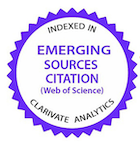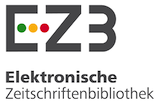CONJUNCTIVAL MICROBIOTA IN CLINICALLY HEALTHY DOGS AND DOGS WITH KERATOCONJUNCTIVITIS SICCA
DOI:
https://doi.org/10.5216/cab.v14i4.19210Keywords:
Animal sanityAbstract
This study aimed to determine the bacterial microorganisms in the conjunctival sac of clinically normal dogs and of dogs with keratoconjunctivitis sicca (KCS) attended at the Veterinary Hospital of the Federal University of Bahia. Thirty health animals and 28 with KCS were included in the research. Bacterial growth was observed in 60% of the healthy dogs and in 89.29% of the dogs with KCS. There was a predominance of Gram-positive species in both groups. In normal animals, Staphylococcus intermedius (26.83%), followed by Staphylococcus aureus (21.95%) and Staphylococcus epidermidis (19.51%) were the most prevalent bacteria and the identification of yeasts in the samples of this group was 38.34%. Of the 30 healthy animals studied, 46.66% showed bilateral positive culture, 26.67% had unilateral positive culture and 26.67% had negative culture. In animals with KCS, Streptococcus ?-hemolytic (16.13%), followed by Staphylococcus intermedius (12.90%) and Staphylococcus aureus (11.83%) were the most prevalent bacteria. Yeast identification in this group occurred in 19.64% of the samples. Of the 28 animals with KCS, 82.14% showed bilateral positive culture and 17.86% unilateral positive culture.
KEYWORDS: Conjunctival flora; dog; keratoconjunctivitis sicca.
Downloads
Published
How to Cite
Issue
Section
License
Copyright (c) 2013 Brazilian Animal Science/ Ciência Animal Brasileira

This work is licensed under a Creative Commons Attribution 4.0 International License.
Authors who publish with this journal agree to the following terms:
- Authors retain copyright and grant the journal right of first publication with the work simultaneously licensed under a Creative Commons Attribution License that allows others to share the work with an acknowledgement of the work's authorship and initial publication in this journal.
- Authors are able to enter into separate, additional contractual arrangements for the non-exclusive distribution of the journal's published version of the work (e.g., post it to an institutional repository or publish it in a book), with an acknowledgement of its initial publication in this journal.
- Authors are permitted and encouraged to post their work online (e.g. in institutional repositories or on their website) prior to and during the submission process, as it can lead to productive exchanges, as well as earlier and greater citation of published work (See The Effect of Open Access).































